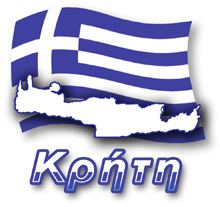
 2024-11-01 19:33:32
2024-11-01 19:33:32
To get to know a country better, you need to learn about local customs, and these can be easily checked by looking into the kitchen and... cemeteries. While no one needs to be persuaded to look into pots, most people feel resistance to visiting cemeteries. We understand this, because looking at tombstones is not a typical holiday activity. Nevertheless, it is worth it, because Greek cemeteries are completely different from the vast Polish necropolises. The customs related to the burial of the deceased are also different. For people who have not had the opportunity to familiarize themselves with them, these customs may seem quite peculiar, or even shocking.
The photos in the article below come from the Cretan cemeteries in the villages of Anidri and Selia.
Selia Cemetery
Cemeteries in Crete are small, and village cemeteries can be quite small. Just a dozen or so tombstones, a modest chapel, often a beautiful view of the surrounding area. Tombstones are usually marble, white, decorated with a daily photo of the deceased and an oil lamp, the fire of which must be kept burning. It often happens that the tombstone is decorated with a motif that shows what the deceased did during his life.
 Selia Cemetery
Selia Cemetery
Someone who looks at a Cretan cemetery may ask themselves: how is it possible that it contains all the deceased inhabitants of the villages…
And here comes the explanation of tradition and also local regulations. For people outside the Greek cultural circle, this is surprising, but you have to remember that everything is dictated by the limited amount of space, as well as the specificity of the land. Due to the fact that Greece is geographically very diverse, these customs may also differ slightly depending on the place.
Let's start with the fact that a funeral usually takes place very quickly after death. This ceremony usually takes place the next day, and the coffin is placed in the family tomb. After burial, the deceased person stays in the grave for only a few years. It is worth adding that this "service" is usually paid for and depending on the region, a year of the deceased's "stay" in the tomb can cost up to half a thousand euros. A few years after burial, the remains of the deceased are taken out of the grave and after the bones of the deceased are washed by the closest people, they are transferred to a small box.
How long does it take before this mandatory "move"? It depends on the location of the cemetery. On average, it takes from 3 to 5 years, in special cases after 7 years. In cities, this time is shorter, because the queue of people "waiting" for a place in the cemetery is longer. It is true that it is possible to leave the deceased in the grave for longer, but as time passes, this option costs the family more and more dearly.
 Cemetery in Anidri
Cemetery in Anidri
The bone boxes are labeled, and often have a photo of the person whose remains are buried in them. Finally, the box with the remains is usually placed in an ostofilakio, a special crypt located in the cemetery. And another deceased person can end up in the empty tomb.
 2024-11-01 19:33:32
2024-11-01 19:33:32
Komentarze
Wypełnij poniższy formularz aby dodać komentarz
lub kliknij w poniższy link aby skorzystać z możliwosci komentowania przez facebooka:
https://www.facebook.com/crete.poland/posts/952642950243303